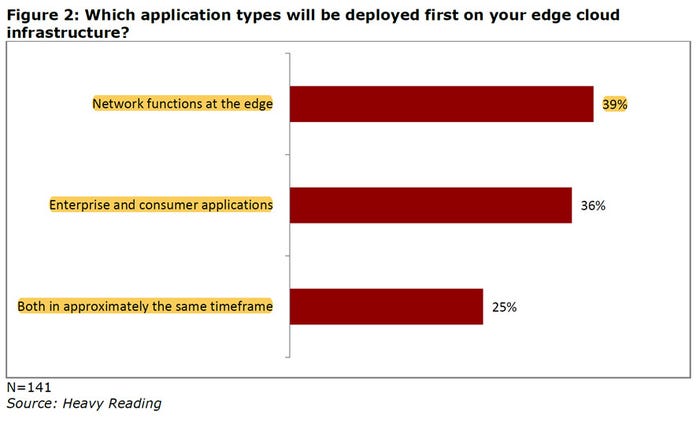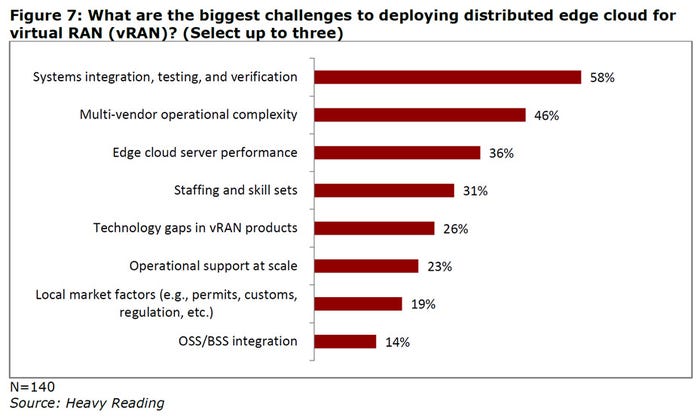Edge cloud will ride the vRAN buildoutEdge cloud will ride the vRAN buildout
Operators are embracing open standards to break decades of vendor lock-in, removing proprietary legacy equipment to dramatically reduce CAPEX and OPEX.
October 19, 2020

Telecoms.com periodically invites expert third parties to share their views on the industry’s most pressing issues. In this piece Paul Miller, CTO at Wind River, looks at interdependency between edge cloud and vRAN as operators contemplate their 5G strategies.
The promise of 5G is huge; from the expansion of IoT and smart cities, all the way to creating connected factories and seeing the creation of commercial AR and VR use cases. Many of these 5G use cases will happen at the edge—this will be critical for ultra-low latency and mission-critical comms—forcing operators to rethink how they deploy and manage services. This new way of thinking is revolutionizing how radio access networks of the future are built. Operators are embracing open standards to break decades of vendor lock-in, removing proprietary legacy equipment to dramatically reduce CAPEX and OPEX. In order to realise their full commercial potential, these new forming OpenRAN ecosystems require physically distributed, virtualised infrastructure, or vRAN onto which 5G edge applications can be hosted.
The commercial potential of OpenRAN and vRAN is significant. The cost reductions and efficiency gains stem from an operator’s ability to dramatically reduce the amount of network equipment it needs to install and manage. Verizon recently completed the “first successful end-to-end fully virtualized 5G data session in the world” which was made possible by implementing virtual RAN. A key driver for this virtualization is to enable greater flexibility and agility in the introduction of new products and services. Instead of adding or upgrading single-purpose hardware, the move to a cloud native, container-based virtualized architecture with standardized interfaces leads to greater flexibility, faster delivery of services, greater scalability, and improved cost efficiency in networks. Verizon has been “bullish in the design and development of open RAN technology, as well as in the testing of that technology with great success.”
vRAN building momentum
The incredible benefits of OpenRAN and vRAN are not limited to operators building greenfield networks. These networks represent a tiny percentage of 5G networks worldwide. A recent operator survey conducted by Heavy Reading revealed that half of respondents expected to have vRAN in commercial service within the next two years – 29% of these operators expect these deployments to be at scale.
The overwhelming majority of operators surveyed by Heavy Reading (85%) also believe that edge cloud architecture is either ‘important’ or ‘critical’ to their 5G strategy. Edge clouds deployed in the radio access networks (RAN) by operators is integral to 5G system design and to operators’ ability to offer ultra-reliable, high performance services to its users. Operators intend to deploy edge clouds to support a combination of vRAN, core, media, and end user multi-access edge computing (MEC) applications – services which can’t be effectively supported by large data centers that are located too far from the user.

It’s interesting to note therefore, that when operators were asked which applications they would prioritise when rolling out an edge cloud architecture, most (39%) selected delivering network functions (vRAN) at the edge. This is significant because operators need heavy workloads for edge cloud platforms to justify the upfront investments needed to create them. The deployment of vRAN creates this ROI because the RAN is high volume and widely distributed. This makes vRAN one of the largest addressable markets for edge cloud, which is why it will likely ‘ride’ the vRAN buildout.
Living with legacy – the challenge of vRAN integration
When asked about the most significant challenges associated with vRAN deployment, 58% of operator respondents to the Heavy Reading survey cited systems integration as the primary challenge, while 46% said multi-vendor operational complexity as the secondary. This is unsurprising. vRAN is new territory, and with new territory comes new ways of working and new approaches. It involves operators having to use hardware and software from multiple vendors, and then testing and verifying the performance of those varying systems—all of which will usually use different parameters and benchmarks.

Overcoming vRAN challenges around systems integration, multi-vendor interoperability and edge cloud performance is critical in meeting operator 5G requirements of low latency, high-availability, scalability, security, and manageability. Having the ability to centrally manage 5G infrastructure through a single pain of glass at scale is a vital part of delivering operational efficiency. This includes the ability to automate and deliver live software updates or automate the enablement of thousands of nodes as vRAN deployment scales and offers true carrier grade six nines high availability.
There is strong evidence to suggest that edge cloud architecture is set to play a central role in helping operators deliver 5G services. It is also set to be a central enabler of vRAN and provide the bulk of the initial ROI for edge cloud investment. Operators need to be reassured that they can get the full benefits of open source innovation through vRAN, while still receiving a carrier-grade, production deployable solution via edge cloud. An effective and reliable management layer that guarantees both will ensure that edge cloud rides the vRAN buildout.
 As Chief Technology Officer at Wind River, Paul Miller is responsible for the company’s strategic technology vision. Paul possesses more than 25 years of telecommunications and advanced applications technology leadership at both large companies and successful startups. Prior to joining Wind River, he was the Chief Technology Officer of GENBAND, a market-leading software solutions provider to the world’s leading service provider and enterprise markets. He has led the architecture and development of various switching, IMS, IP media, call control and web applications solutions employed by multiple tier-one operators worldwide. His last six years has been focused on OpenStack, SDN, and NFV automation technology, and includes operation of a multi-site, multi-cloud infrastructure, multiple Tier one CSP VNF deployments as well as a significant NFV patent history. His contributions throughout his career have enabled many communications service providers worldwide to create new revenue streams, while dramatically reducing operating costs.
As Chief Technology Officer at Wind River, Paul Miller is responsible for the company’s strategic technology vision. Paul possesses more than 25 years of telecommunications and advanced applications technology leadership at both large companies and successful startups. Prior to joining Wind River, he was the Chief Technology Officer of GENBAND, a market-leading software solutions provider to the world’s leading service provider and enterprise markets. He has led the architecture and development of various switching, IMS, IP media, call control and web applications solutions employed by multiple tier-one operators worldwide. His last six years has been focused on OpenStack, SDN, and NFV automation technology, and includes operation of a multi-site, multi-cloud infrastructure, multiple Tier one CSP VNF deployments as well as a significant NFV patent history. His contributions throughout his career have enabled many communications service providers worldwide to create new revenue streams, while dramatically reducing operating costs.
Read more about:
DiscussionAbout the Author
You May Also Like










.png?width=300&auto=webp&quality=80&disable=upscale)


_1.jpg?width=300&auto=webp&quality=80&disable=upscale)